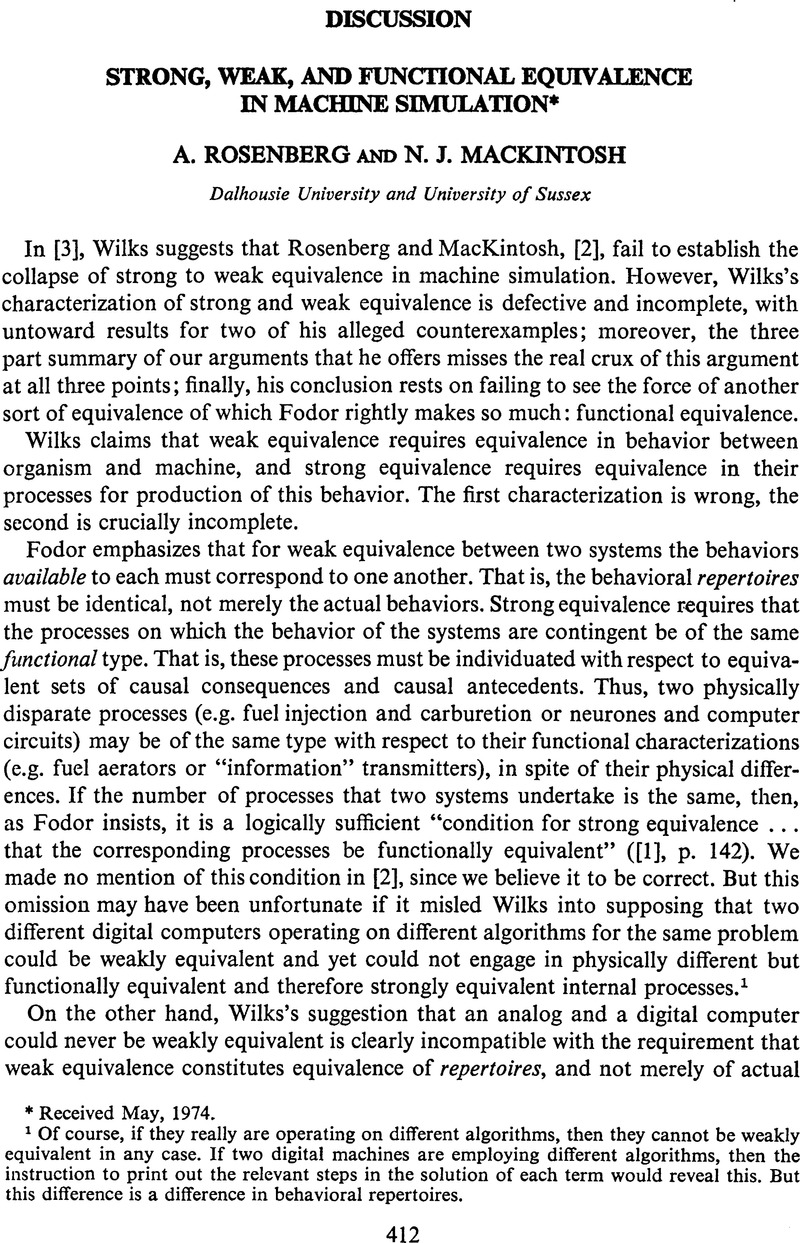No CrossRef data available.
Article contents
Strong, Weak, and Functional Equivalence in Machine Simulation
Published online by Cambridge University Press: 14 March 2022
Abstract
An abstract is not available for this content so a preview has been provided. Please use the Get access link above for information on how to access this content.

- Type
- Discussion
- Information
- Copyright
- Copyright © 1974 by The Philosophy of Science Association
References
REFERENCES
[2] Rosenberg, A. and MacKintosh, N. J. “On Fodor's Distinction Between Strong and Weak Equivalence in Machine Simulation.” Philosophy of Science 40 (1973): 118–120.CrossRefGoogle Scholar
[3] Wilks, Y. “More on Fodor's Distinction Between Strong and Weak Simulations.” Philosophy of Science 41 (1974): 408–411.CrossRefGoogle Scholar


